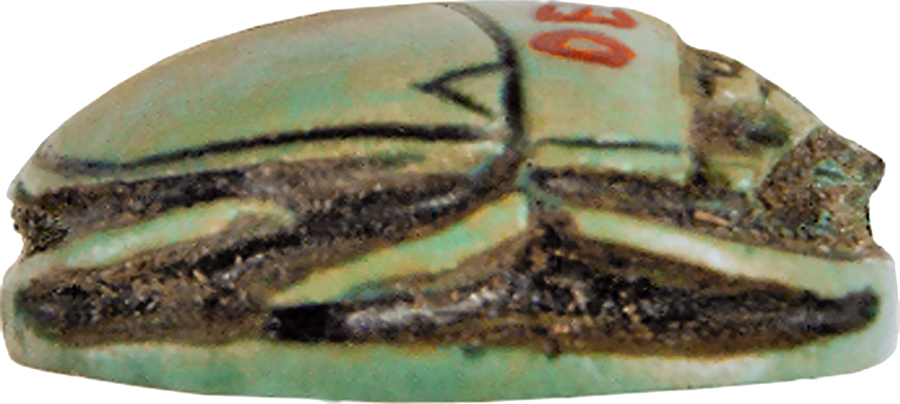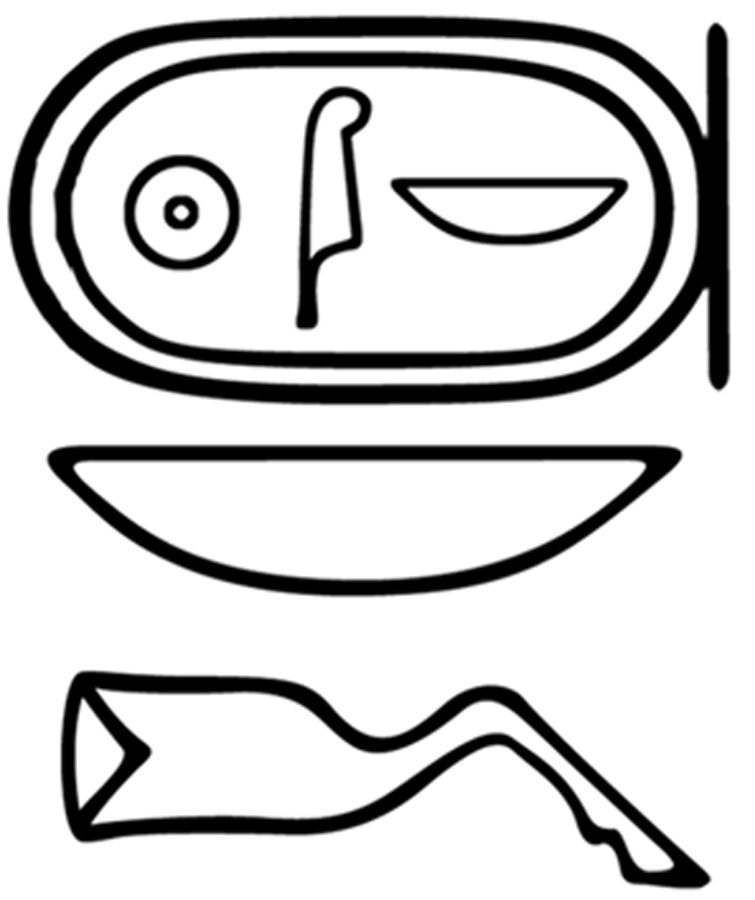Scarab with the Throne Name of Amenophis III (1388-1351/1350 BCE)
(Ancient Egypt and Nubia )
This steatite scarab is glazed and incised. The flat underside contains an inscription with the throne name of Amenophis III (1388-1351/1350 BCE) and a power loaded epithet. The design on the back is very detailed, with deelpy incised lines and regular flow. The piece is carefully made and the workmanship is good.
This piece functioned as an individualized protective amulet, and would have originally been mounted or threaded. The amulet should secure royal authority and strength for the king, and guarantee for a private owner his royal patronage and protection.
The unusual size of the epithet in comparison to the name of the king underlines the protective function of the scarab. Together with the cryptographic reading of the cartouche as Amun it expresses that the god is the "Lord of strength," that my explain the unusual size of the epithet.
Inscription
Provenance
Provenance (from the French provenir, 'to come from/forth') is the chronology of the ownership, custody, or location of a historical object. Learn more about provenance at the Walters.
Henry Walters, Baltimore, 1929 [mode of acquisition unknown]; Walters Art Museum, 1931, by bequest.
Geographies
Egypt (Place of Origin)
Measurements
H: 1/4 x W: 1/2 x L: 5/8 in. (0.7 x 1.2 x 1.6 cm)
Credit Line
Acquired by Henry Walters, 1929
Location in Museum
Not on view
Accession Number
In libraries, galleries, museums, and archives, an accession number is a unique identifier assigned to each object in the collection.
In libraries, galleries, museums, and archives, an accession number is a unique identifier assigned to each object in the collection.
42.80












